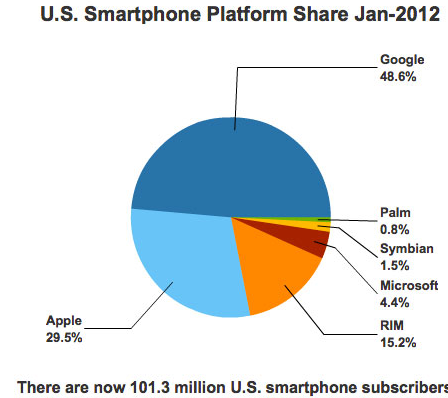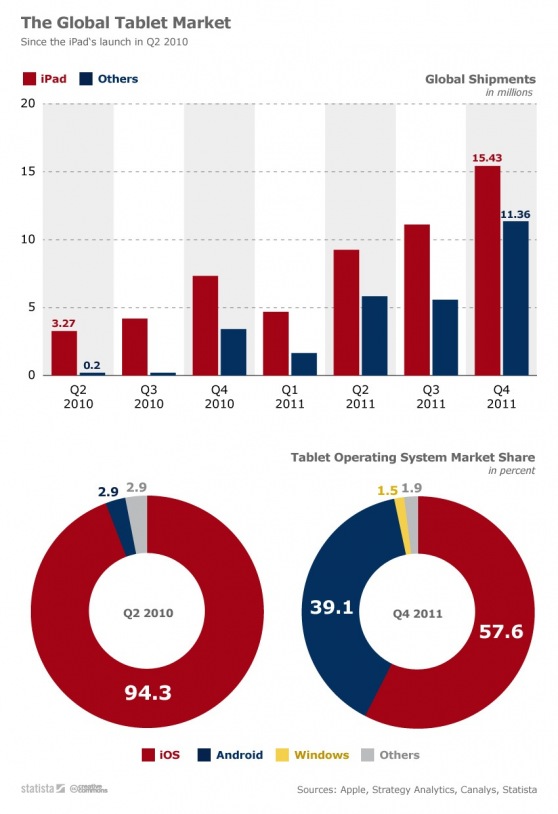In anticipation of yesterday’s Apple event, I have been thinking about the market share differences between iPhones and iPads.
They are both hugely successful products, but the iPad absolutely dominates in terms of market share. That share has shrunk from the 95% when Apple created the category, but even at 57% its still enormous.
iPhones, on the other hand, despite a similar experience and essentially the operating system, are a much smaller 30%.
Why is that?
Have a look at the next 3 charts, then meet me at bottom.
>
iPhone Market Share

via Apple Insider
>
iPad Market Share

via Venturebeat
>
iPad vs Nook vs Kindle vs Android Market Share

via Minyanville
>
I have a modest theory as to why this market share disparity exists: Buyers of phones get a carrier subsidized product that all do a decent job acting as mobile phones. Smart phones are half phone, half mobile computing platform. The phones both more or less do what they are supposed to do.
I suspect that the differences between the smart devices matter much less if your usage is nearly identical for telephony and close enough for computing. They are, in the words of Wired, good enough (The Good Enough Revolution: When Cheap and Simple Is Just Fine).
Hence, the differences between the products is not that great relative to how they are actually deployed. Perhaps “good enough” is sufficient when half of your usage is basic text and phone calls.
On the other hand, the Tablets are primarily used as computing devices. The user experience, interface, app availability, power, speed, and operating system superiority could make an enormous difference between tablet users.
Does this explain the market share differences?I don’t know, but its the best thesis I have.
What do you think?


What's been said:
Discussions found on the web: